NC State Extension Helps People Tell the Trees in the Forest
go.ncsu.edu/readext?991862
en Español / em Português
El inglés es el idioma de control de esta página. En la medida en que haya algún conflicto entre la traducción al inglés y la traducción, el inglés prevalece.
Al hacer clic en el enlace de traducción se activa un servicio de traducción gratuito para convertir la página al español. Al igual que con cualquier traducción por Internet, la conversión no es sensible al contexto y puede que no traduzca el texto en su significado original. NC State Extension no garantiza la exactitud del texto traducido. Por favor, tenga en cuenta que algunas aplicaciones y/o servicios pueden no funcionar como se espera cuando se traducen.
Português
Inglês é o idioma de controle desta página. Na medida que haja algum conflito entre o texto original em Inglês e a tradução, o Inglês prevalece.
Ao clicar no link de tradução, um serviço gratuito de tradução será ativado para converter a página para o Português. Como em qualquer tradução pela internet, a conversão não é sensivel ao contexto e pode não ocorrer a tradução para o significado orginal. O serviço de Extensão da Carolina do Norte (NC State Extension) não garante a exatidão do texto traduzido. Por favor, observe que algumas funções ou serviços podem não funcionar como esperado após a tradução.
English
English is the controlling language of this page. To the extent there is any conflict between the English text and the translation, English controls.
Clicking on the translation link activates a free translation service to convert the page to Spanish. As with any Internet translation, the conversion is not context-sensitive and may not translate the text to its original meaning. NC State Extension does not guarantee the accuracy of the translated text. Please note that some applications and/or services may not function as expected when translated.
Collapse ▲In his famous poem Stopping by Woods on a Snowy Evening, Robert Frost has a general idea of where he is. “Whose woods these are I think I know,” the poet writes.
Sure, but does he know what species of trees he is looking at? It can be tricky in the winter, when most can look a nondescript brown or gray.
That’s why NC State Extension forestry expert Nathan Gatlin invited the public to a winter tree identification program in Wilkes County.
Gatlin is the area specialized agent for Extension forestry in the western half of North Carolina. His responsibilities include working with Extension’s county directors and agents to help landowners with forestry education and management, and assisting businesses and professionals with the economics of the timber industry.
In early February, he expanded his offerings to include anyone who simply wanted to know more about the trees they see on a daily basis — especially during a time of year when the lack of greenery makes them harder to recognize.
“We are doing a tree identification class for people in the area that just want to know a little bit more about what’s out in the woods,” he said. “We want them to be able to have a better idea of this tree versus that tree when they walk through the woods.”
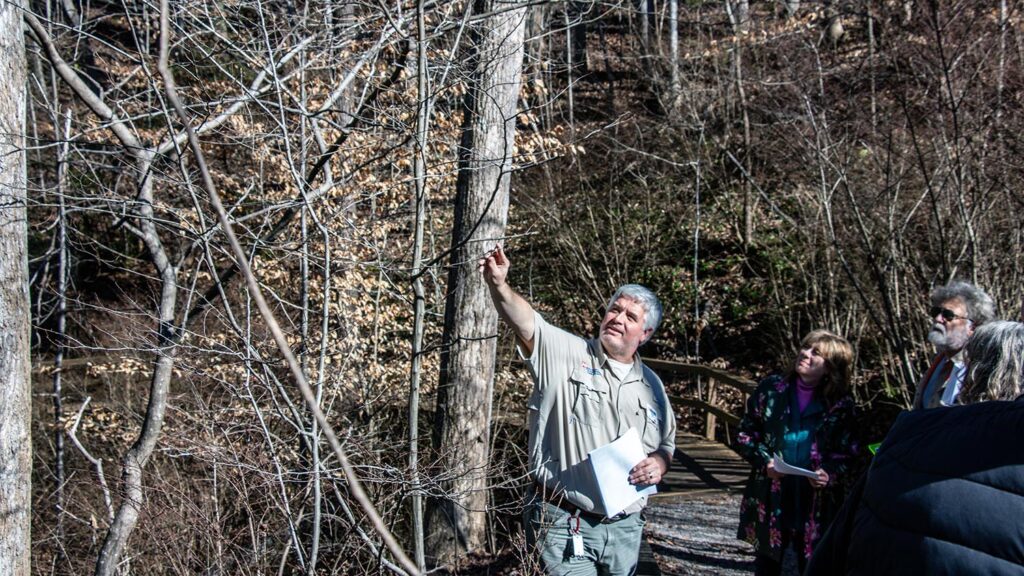
NC State Extension forestry agent Nathan Gatlin points out ways to identify trees in the winter when foliage is scarce.
Gatlin knows about trees. He worked for the North Carolina Forest Service before joining Extension in July 2023.
“I started out as a county forester here in Wilkes and got lots of experience managing hardwoods and loblolly pines, then was assistant district forester in the northwest corner of the state,” he said. “When this job became available, it really grabbed my attention because of what it does, which is primarily education.”
Related: Celebrate trees on North Carolina Arbor Day, March 22
As a renewable resource, trees have always been an important element of the state’s economy. In the colonial era, North Carolina’s longleaf pines produced “naval stores” — wood, tar, pitch and turpentine — for the British Navy. Several paper mills were founded during the colonial and early statehood period. The furniture industry grew rapidly in the 1890s and High Point, with 44 factories operating in and around the town, became known as the “furniture capital of the world.”
Naval stores are consigned to history books and much of the furniture industry has moved overseas, but trees remain a commercially viable commodity, generating about $10 billion of income annually. North Carolina is the second leading Christmas tree producer in the nation, producing about 26% of the U.S. crop. There are more than 18 million acres of timberland, supporting a robust forest sector that includes forestry and logging operations, sawmills, furniture mills, and pulp and paper industries.
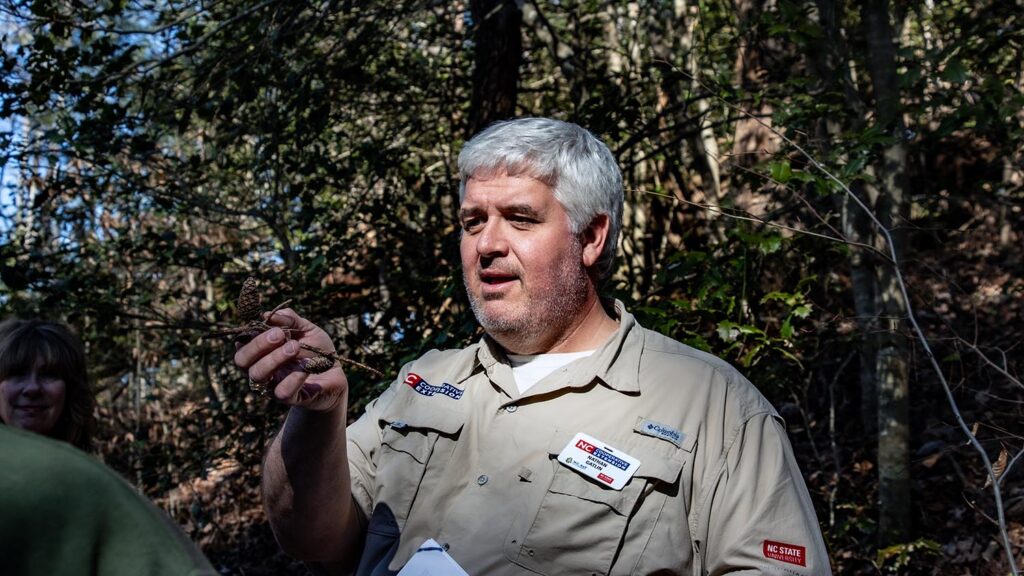
NC State Extension forestry agent Nathan Gatlin demonstrates how species of pine trees can be differentiated by the size and shape of the cones.
Gatlin’s education mission includes working with agents and producers on the economics of forestry.
“A lot of times, landowners don’t know they can make money from their trees or they can accomplish some recreation and wildlife goals,” he said. “I can go out and work with them on a forest management plan.”
Tree identification is at the heart of what he does. It’s difficult to devise a management plan if you can’t tell the trees in the forest.
“It is something that is near and dear to the heart of forestry,” Gatlin said. “All foresters, when they’re out in the woods, need to be cognizant of the trees, to look for different species and know how to merchandise them. Oaks and hickories are obviously more important than the tree of heaven. Loblolly pine is an extremely important tree species here in the state.”
Related: NC State Extension guide to identifying trees in North Carolina
That’s why Chris Kull participated in the winter tree identification hike in Wilkes County. He works for a Wilkesboro-based company that specializes in botanical products, including tree bark.
“Our company produces dried barks in big quantities for folks that extract it for either nutraceutical use or for tea bag cuts for putting into teas,” he said. “The ones we source locally are white oak, red maple and black cherry. My colleague and I thought it would be good to tighten up on winter ID, to make sure we’re showing our guys the right stuff. It’s an easy job in the spring and summer but it can be tough during the winter.”
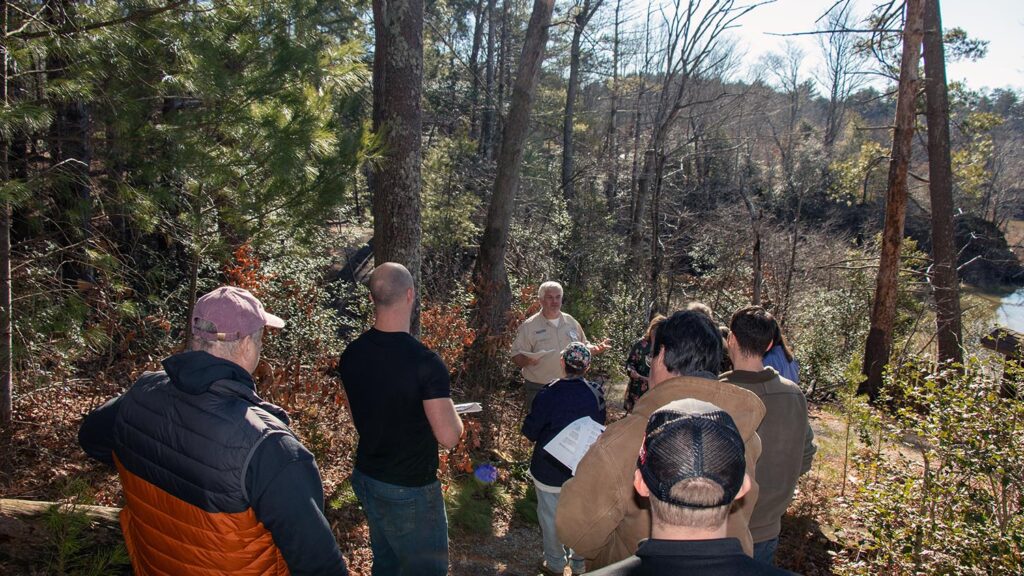
In addition to information on how to identify trees in the winter, participants enjoyed a nice walk in the woods.
The winter tree identification workshop involved a short hike from the visitor center at the W. Kerr Scott Dam and Reservoir in Wilkesboro. With the lake as a beautiful backdrop, Gatlin stopped every couple of hundred yards to point out the many species of trees — sycamores, poplars, hickories, maples, different varieties of oaks and pines, ones important to wildlife like the Eastern hemlock and sourwood.
The blend of identification and information about the importance of the different species was exactly why Kathy Snider had come. She and her husband are clearing some trees on their property and she wanted to ensure they are making good decisions for ecological reasons.
“I just want to identify trees on our property and I’m terrible at it,” she said. “I want to know which ones we want to protect and which ones you don’t want to cultivate. We also have bees and I have a hard time identifying sourwood. As my husband is cutting down trees I want to say no, not that one but you can have that one.”
Related: How to spot sick or stressed trees
Economics and ecology are good reasons to attend a winter tree identification workshop. Another is simply to appreciate something akin to poet Joyce Kilmer’s famous ode to nature: “I think that I shall never see a poem lovely as a tree.”
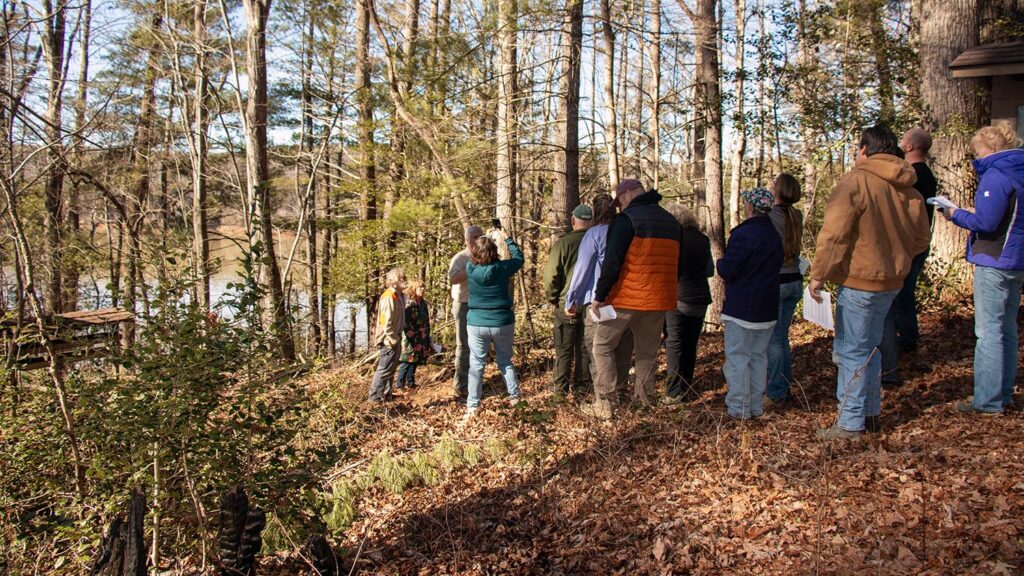
Workshop participants go off the beaten path to look at trees.
Trees are far more than a commercial product. They are beautiful to look at, and important to the ecosystem. The winter tree identification workshop was the forestry equivalent of stop and smell the roses. Hike and appreciate the trees, even before they are graced with leaves or flowers.
That’s what Wilkes County resident Pam McCarrick most appreciated about the outdoors workshop.
“I hike and I’m out in the woods a lot,” she said. “I just enjoy nature. There’s a couple of trees that I wasn’t sure how to differentiate. It sounded interesting, and it’s a nice day to get out in the woods.”
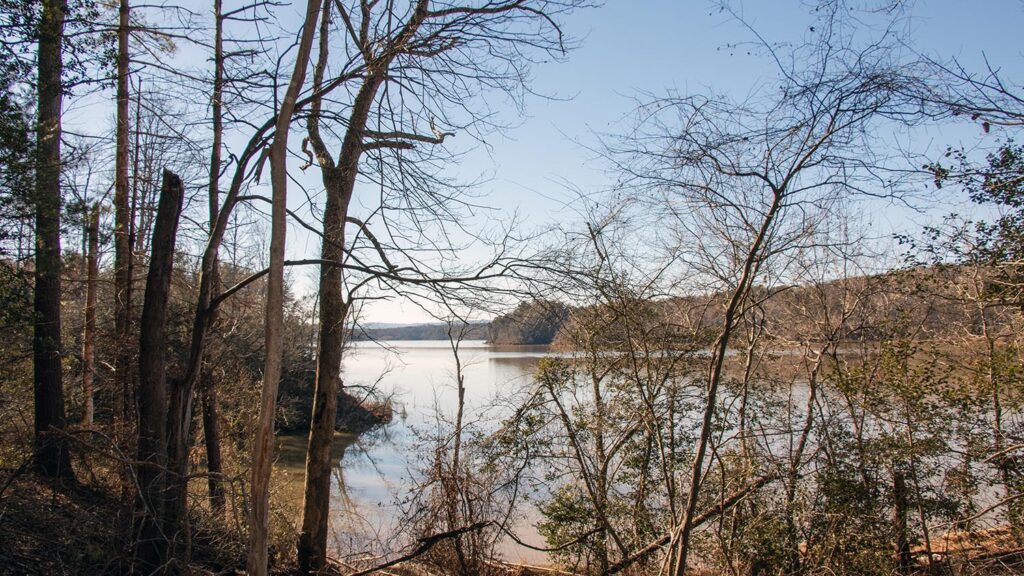
After learning how to identify trees, different species can emerge from what was once a tangle of trunks and limbs.
Tips on identifying trees in winter
Use a phone app. Gatlin recommends vTree, which is put out by Virginia Tech, and PlantSnap.
Buy a guide. The National Audubon Society Field Guide for North American Trees: Eastern Region is a comprehensive reference.
Opposite or alternate. Are the leaves, twigs and branches coming out opposite each other, or do they alternate? If the former, the tree is either a maple, ash, dogwood, buckeye, horse chestnut or something in the caprifoliaceae family (honeysuckles), which can be recalled by the mnemonic mad bucking horse caps. “If it’s alternate it’s going to get a little more complex, but at least you’ve excluded all those trees you know it’s not,” Gatlin said.
Leaf shape. A more important factor in the spring and summer, but it can also be valuable for identifying evergreens in the winter. The length of the needles can differentiate a loblolly from a shortleaf pine.
Fruits and nuts. Oaks have acorns. A maple, ash or elm will have a samara (winged seed also known as keys, helicopters and whirligigs).
“Ultimately, what it comes down to is practice, practice, practice,” Gatlin said. “The more you go out and look at plants, the more familiar you’re going to get. You’re going to begin to pick up on patterns.”
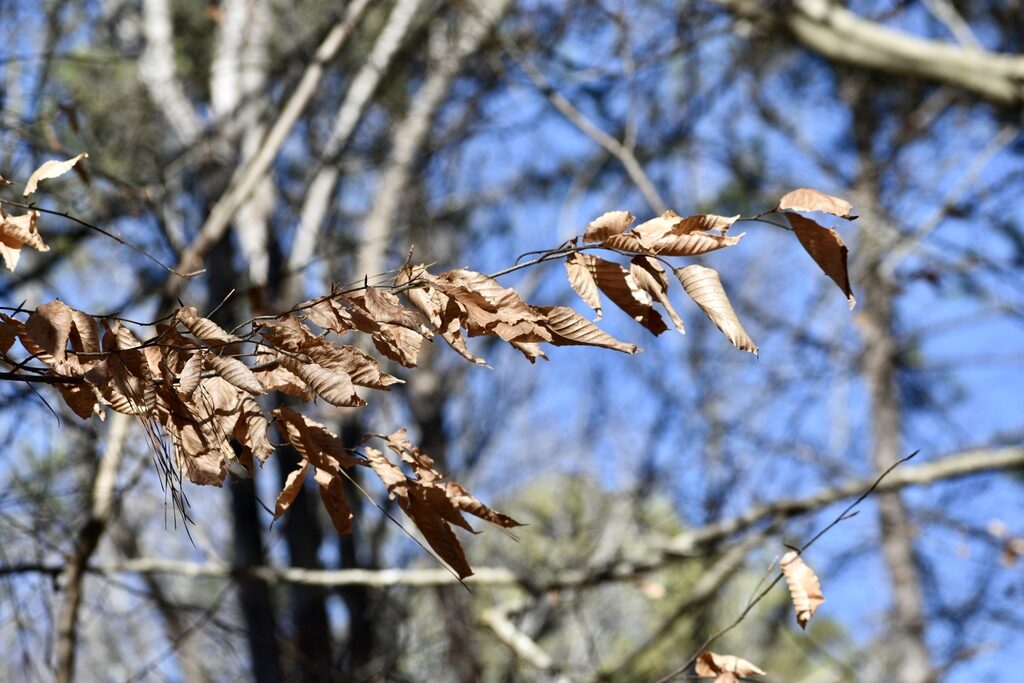
The American beech has leaves that turn papery brown and don’t drop in the winter.
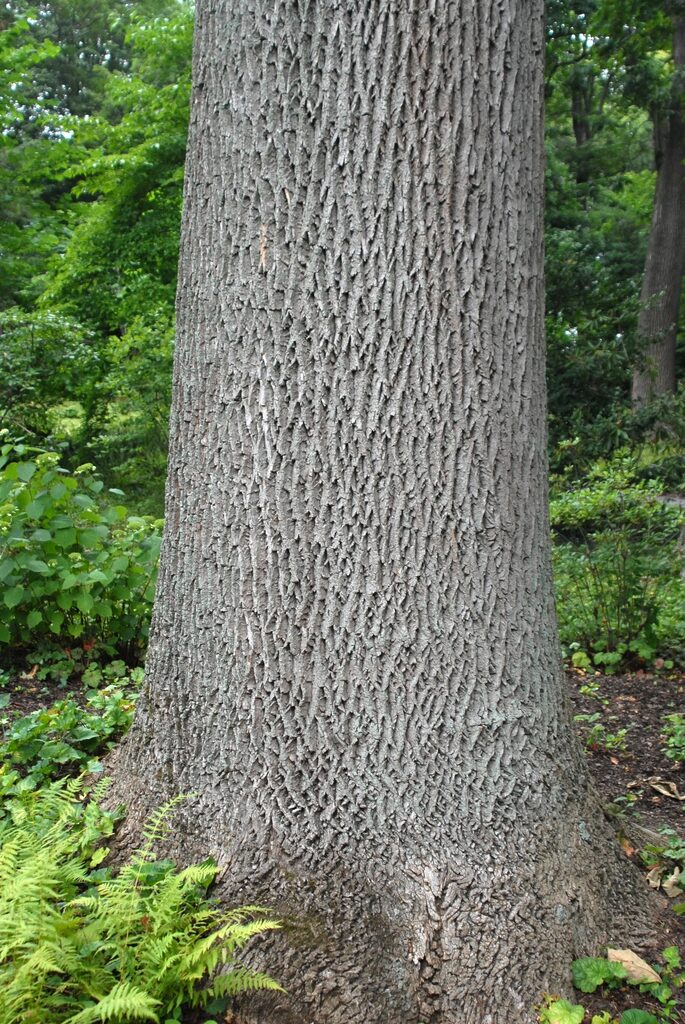
White ash has a distinctive diamond-patterned bark.
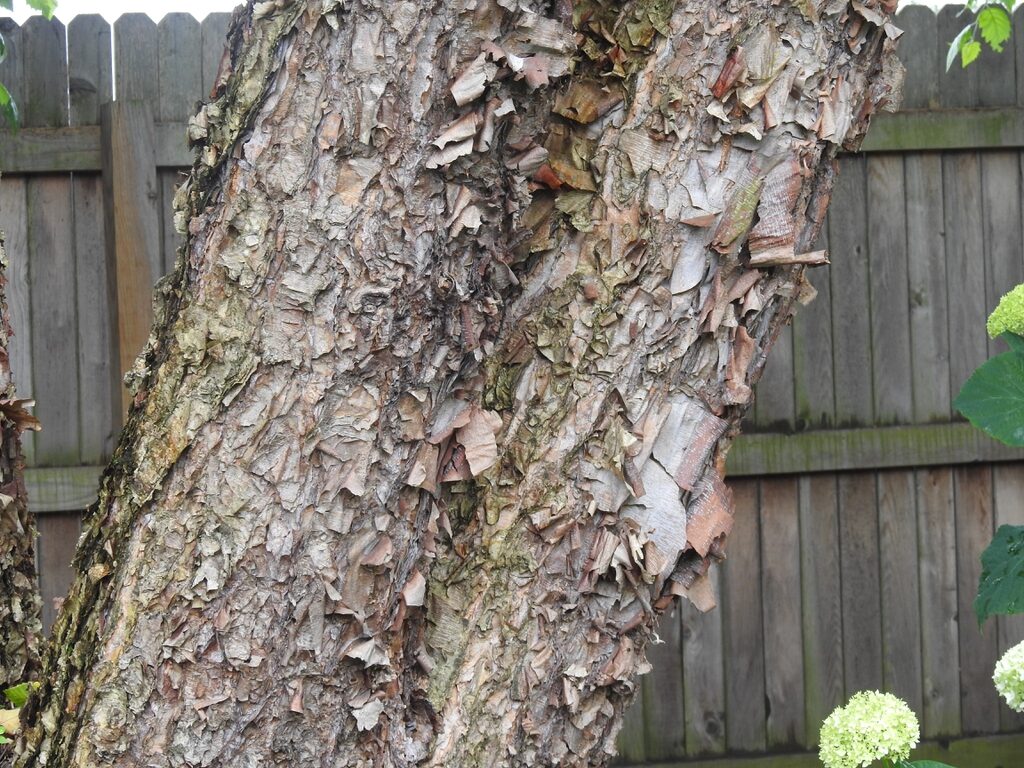
River birch has papery bark that exfoliates year-round.
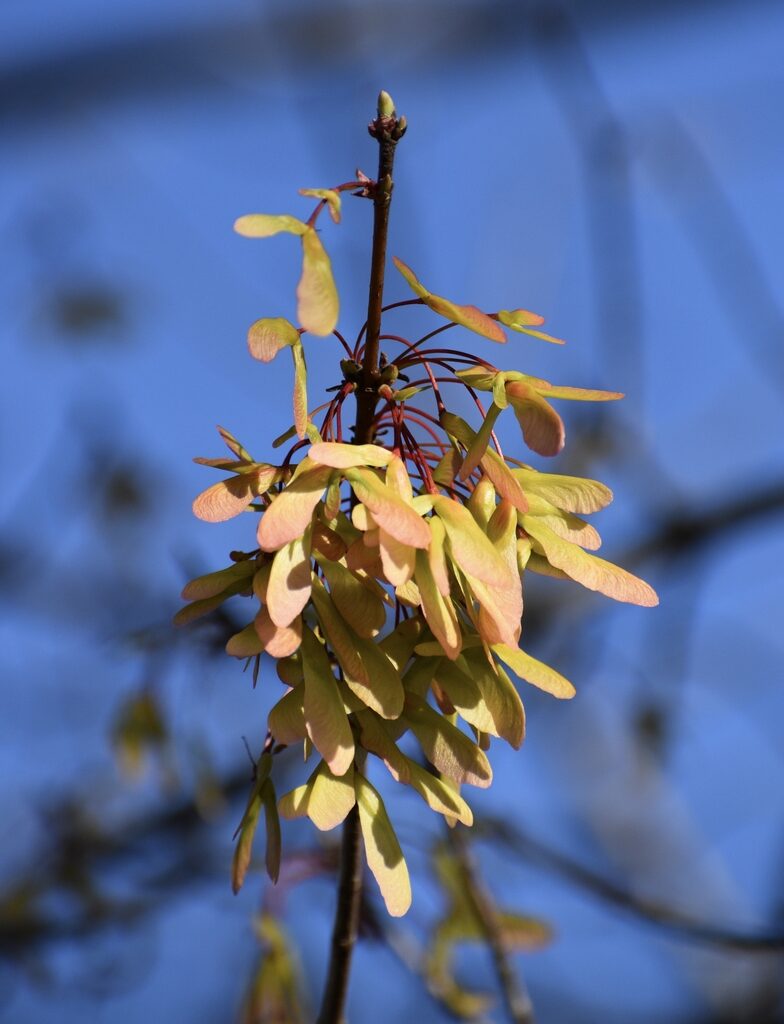
The fruit of the red maple is a double samara with wings that form a V-shape with long, slender stems.
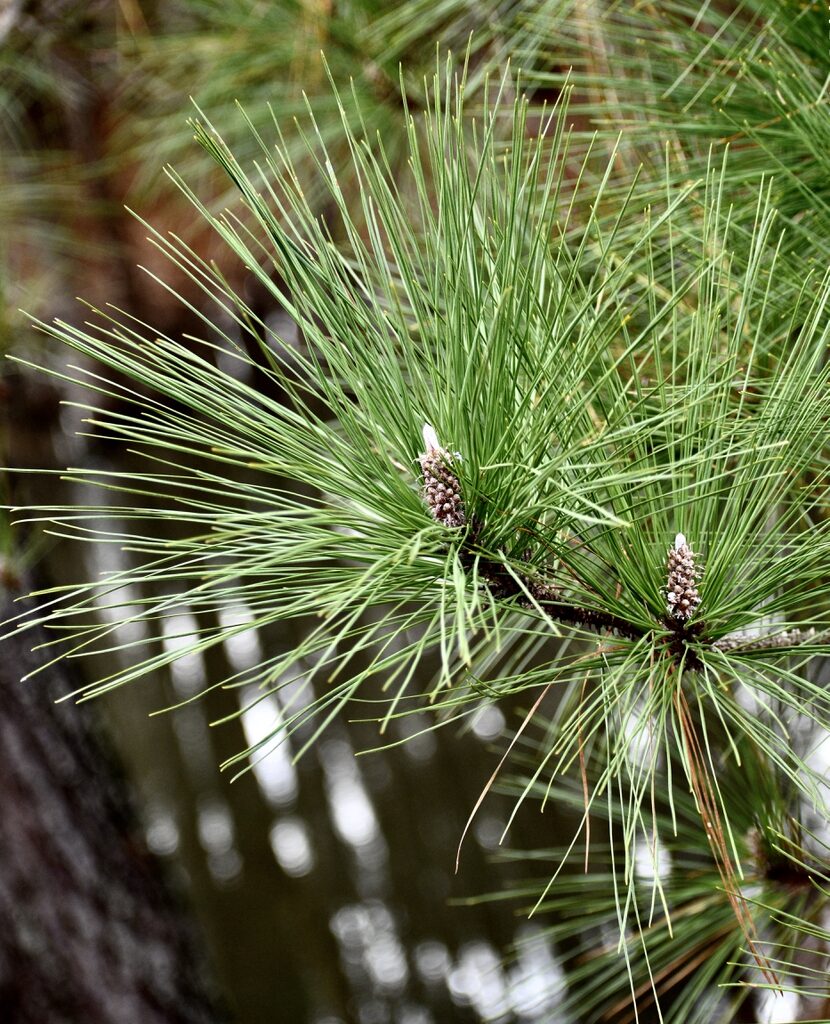
Longleaf pines have elongated needles in sets of three.
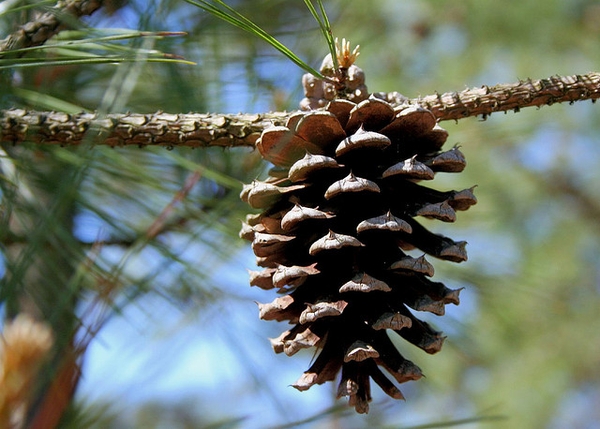
Loblolly pines have cones edged with sharp burs.
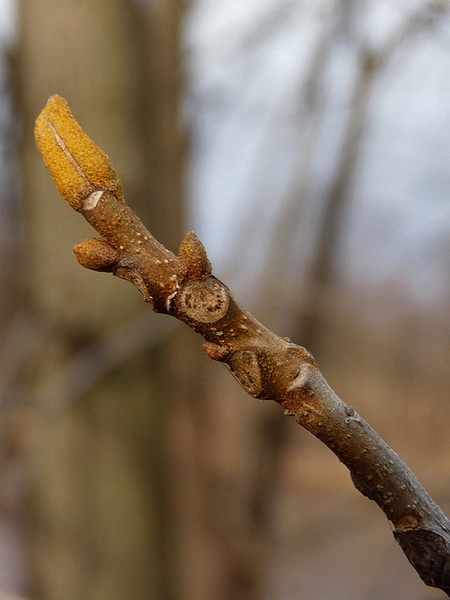
Bitternut hickory has a sulfer-yellow elongated bud.

